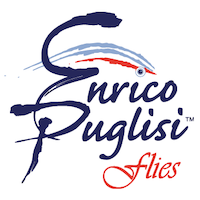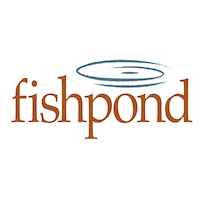Fly Fishing Central Florida
 The next time you find yourself in a plane over Central Florida, take a look below. Unless it's at night or the weather is particularly bad, you will see water. All types of water. Lakes of various shapes and sizes, both natural and manmade, dot the landscape, with streams and rivers flowing in between. A variety of habitats, grading from brackish to saltwater, outlines most of Florida. Almost all of this water holds fish.
The next time you find yourself in a plane over Central Florida, take a look below. Unless it's at night or the weather is particularly bad, you will see water. All types of water. Lakes of various shapes and sizes, both natural and manmade, dot the landscape, with streams and rivers flowing in between. A variety of habitats, grading from brackish to saltwater, outlines most of Florida. Almost all of this water holds fish.
Local fly anglers, who have lived and fished in the area for a while, will already know what gear they need, where to go, and how to catch the fish that live there. If you are new to fly fishing, new to the area, or just visiting for a few days, you probably aren’t sure where to start.
Fish with a Guide or DIY?
 Hiring a guide will give you the best odds of success and will allow you to experience the best of what our area has to offer. If you can spare the time and can fit a trip into your budget, we strongly suggest a guided trip or two. There are a number of excellent guides in the area, specializing in a variety of locations and species, both fresh and saltwater. Aside from giving you a much better shot at catching your target species, you will likely learn a lot about the area and the fishery.
Hiring a guide will give you the best odds of success and will allow you to experience the best of what our area has to offer. If you can spare the time and can fit a trip into your budget, we strongly suggest a guided trip or two. There are a number of excellent guides in the area, specializing in a variety of locations and species, both fresh and saltwater. Aside from giving you a much better shot at catching your target species, you will likely learn a lot about the area and the fishery.
There is something to be said for doing it on your own. A do-it-yourself trip is certainly less expensive and, assuming you catch fish, you'll get the satisfaction of having done it by yourself.
 Going fishing on your own requires that you first decide if you will fish fresh or saltwater. There are plenty of options for each, but the freshwater fishing is much more accessible, and the odds of success are much higher. Saltwater fishing is considerably more challenging but is well worth the effort and frustration. The thrill of stalking a feeding fish across the flats is one of the high points in all of fly fishing.
Going fishing on your own requires that you first decide if you will fish fresh or saltwater. There are plenty of options for each, but the freshwater fishing is much more accessible, and the odds of success are much higher. Saltwater fishing is considerably more challenging but is well worth the effort and frustration. The thrill of stalking a feeding fish across the flats is one of the high points in all of fly fishing.
If you are interested in fishing on your own, here is some information on Freshwater Fly Fishing in Central Florida and
Saltwater Fly Fishing in Central Florida. These pages will provide an introduction to the local fishing and, should you decide to hit the water on your own, enough information that you may be able to catch a few fish.
Other Fly Fishing Opportunities
There are many more possibilities, both fresh and saltwater, other than what is listed here. If you are a local who is just getting into fly fishing or have just moved into the area, you will probably want to try some other options before long. If you are a proficient fly angler visiting the area, you may be interested in fishing we don’t provide details on. Come on in, give us a call or fill out our contact form. If we know your interests and skill level, we can provide some additional information that will help you to enjoy more of what our nearby waters have to offer.
Things to Consider: a few things to keep in mind as you plan your trip
-
 Unless you are fishing with a guide in saltwater, or are exempt from the license requirement, you will need to purchase a fishing license. Florida issues separate fresh and saltwater licenses as well as a combined license.
Unless you are fishing with a guide in saltwater, or are exempt from the license requirement, you will need to purchase a fishing license. Florida issues separate fresh and saltwater licenses as well as a combined license. - If you are launching from Merritt Island Refuge or fishing from refuge property, you will need a self-issuing Refuge Permit. Visit the Merritt Island Refuge website and look for the link for “Merritt Island Boat and Fish Regs Brochure” Clicking on that link will bring up a pdf of the required permit, along with a map of the refuge.
- Don’t leave valuables in your car at the boat ramp or park. Break-ins do occasionally happen and there’s no reason to make yourself an easy target.
- Don’t lip fish you can’t identify. There are several fish species you may catch, in both fresh and saltwater, that carry an impressive set of teeth.
- If you decide to do some wade fishing in saltwater, make sure you wear shoes that will stay on in mud and, if in a tidal area, provide protection from oysters. You will also want to employ the “sting ray shuffle.” When you move your foot forward to take a step, slide it along the surface of the bottom. This way you will kick any sting rays out of the way instead of pinning them to the bottom and risking a spine in your shin.
- When fishing in Central Florida, especially in the warmer months, you are likely to see alligators. If you are aware of them and give them some room, they typically don't cause any problems. If you see one move towards you and/or push part of its body out of the water, just go the other way. In areas where you have seen alligators, especially in deeper water where you can’t see the bottom, avoid reaching into the water to land fish.
- Several species of poisonous snakes call central Florida home. Most commonly seen are water moccasins and pygmy rattlesnakes. Just watch where you step and make a little noise when walking through underbrush and you'll be fine. You probably won't see one, but they are something to be aware of.
Related Pages
Freshwater Fly Fishing in Central Florida
Saltwater Fly Fishing in Central Florida














